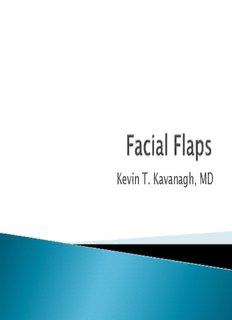
Kevin T. Kavanagh, MD - Allergy Ear Nose and Throat - Ear PDF
Preview Kevin T. Kavanagh, MD - Allergy Ear Nose and Throat - Ear
Kevin T. Kavanagh, MD Axial ◦ Based upon a named artery. ◦ Survival length depends upon the artery not the width of the flap. Random ◦ Has random unnamed vessels supplying it. ◦ Survival length is directly proportional to the width of the flap. ◦ Survival length maybe increased by delaying the flap. To delay a flap, elevate as a bipedical flap and return it to the flap’s bed. Two weeks later, elevate as a unipedical flap. Interpolation flap is a two-staged flap where a pedicle traverses intact skin. The flap’s pedicle maybe divided in three to six weeks. Early division requires training of the flap. Examples of this type of flap are the forehead flap, the Abbe-Estlander flap and some nasolabial flaps. This flap can be used to close large defects. The flap is planned so as not to violate cosmetic units of the face. The arc of the flap should be no greater than twice the base. A back-cut can be made to increase the flap’s rotation. This patient had a melanoma. A 1 cm margin is outlined around the melanoma. The melanoma had less than 1 mm of invasion. The melanoma was resected. The adipose tissue of the cheek and orbicularis oculi muscle was exposed. A deep margin of the muscle and adipose tissue was negative. The length of the flap should be 4:1 to the defect. A wedge of tissue may be taken inferiorly to prevent a dog ear. The flap is designed to not cross facial sub-units. This incision arches superiorly around the orbital rim, across the temple area where “crows feet” wrinkles are common, then down the pre-auricular area into the neck.
Description: